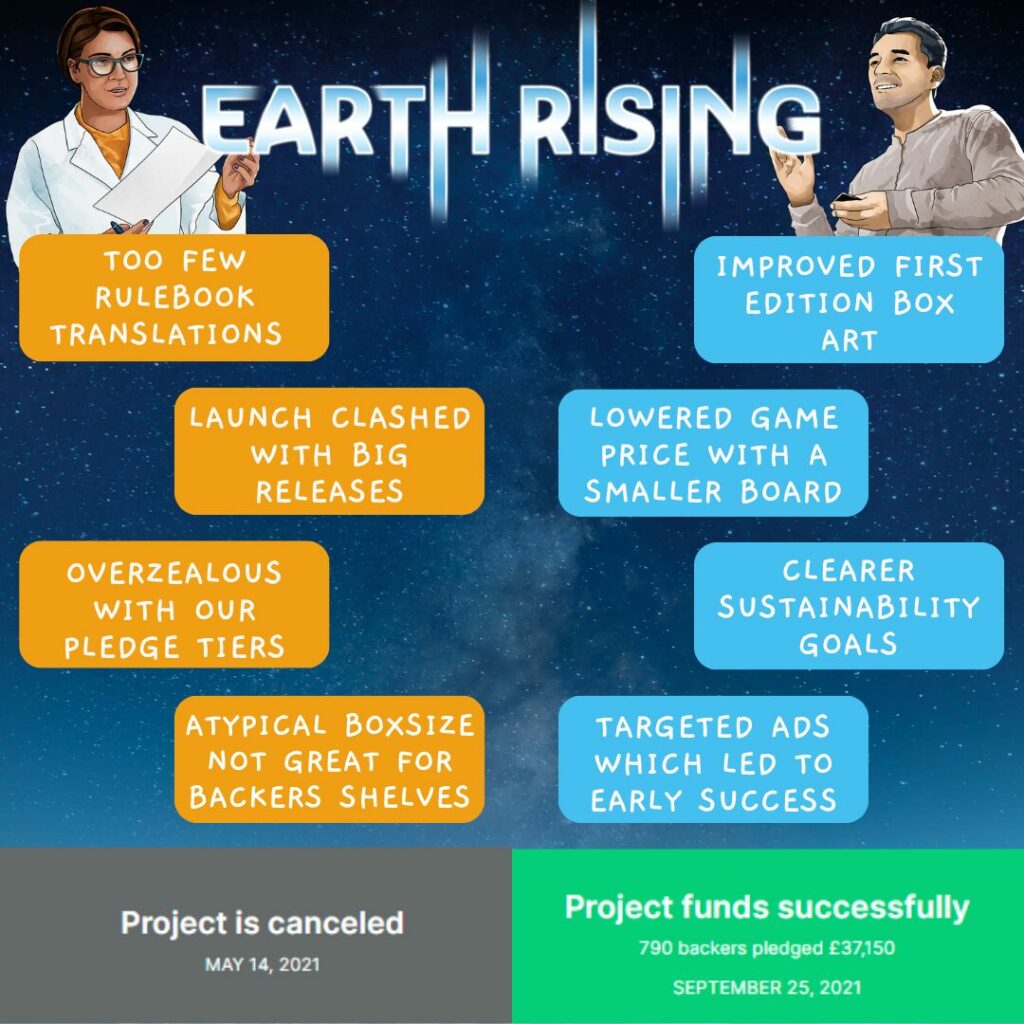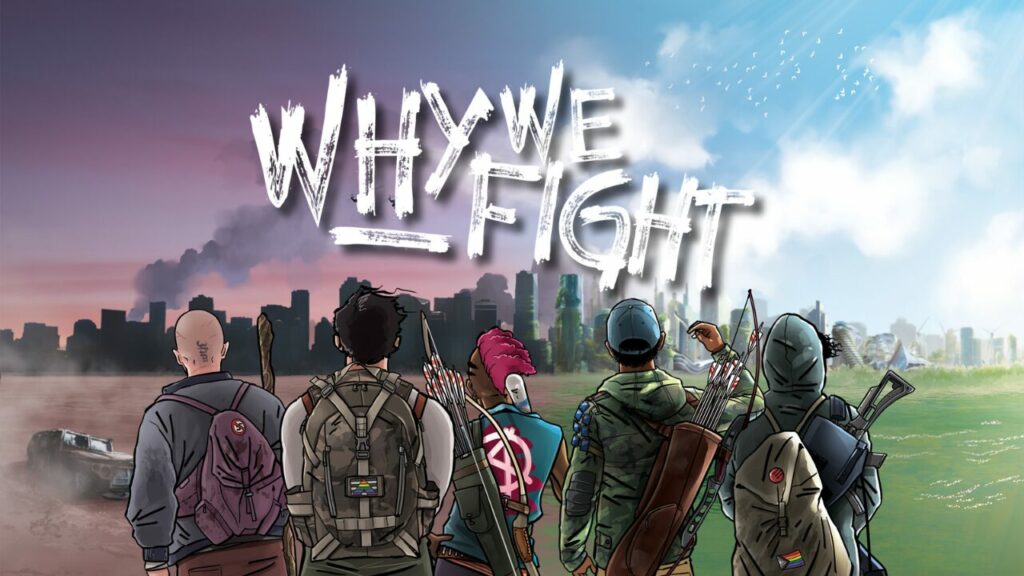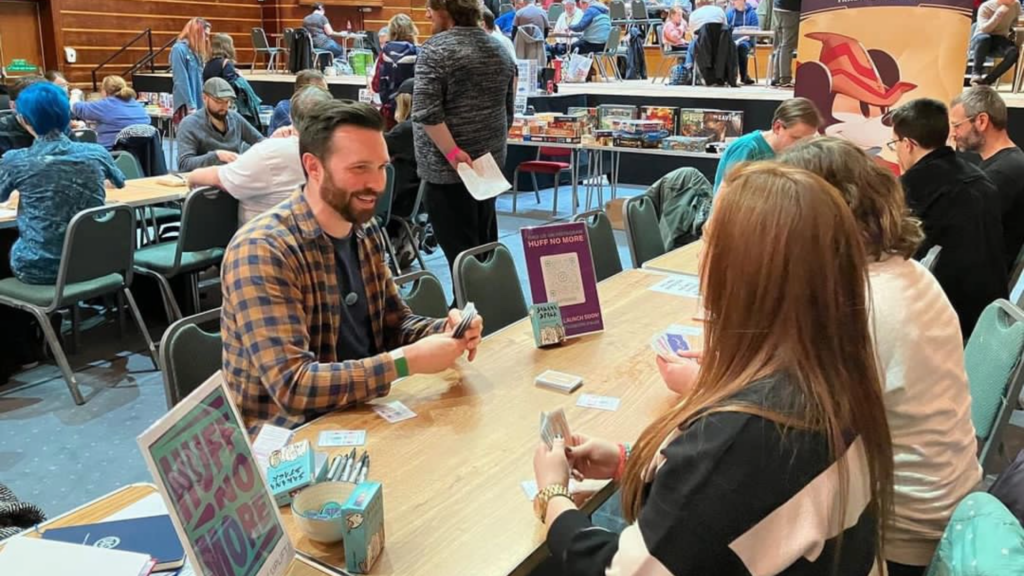
This week I catch up with the brilliant team from Stop, Drop & Roll; Rhi, Laurie and Rob. After reading a recent Instagram post, I was keen to find out more about what they learned from their firstly failed, and then successful Kickstarter campaigns. Read ahead for some real honesty, and make sure you follow the team on Instagram as they’ve got a new game coming soon!
Joe: Heya, your recent post for #BoardgameProtohype was brilliant. Really honest and something that we can all learn from. I wonder if you might explore some of the challenges a little more? I’ll start with a question – of all the challenges you highlighted in the post, what’s the one that you point to as your key piece of learning?
SDR: Our key piece of learning was more inferred than outright stated: be transparent and honest. We cancelled two projects based on backer feedback, and while at the time it felt we may have doomed ourselves, being transparent about why we cancelled, and what we intended to do better next time, is actually what allowed us to succeed.
Our honesty meant backers from the first campaign were willing to back the second, and were excited to see that we were not only taking feedback on board, but genuinely looking to change for the better based on it. We built a reliable community that trusted us, and that is invaluable!
As someone that hasn’t yet run a crowdfunding campaign, were there any of our lessons that came as a surprise to you?
Joe: I was interested in the box size – it surprised me that that would be a turn off for backers. I relate to it as I’m looking for something a little different in the box for my game. The plan is for it to come in a tin as it fits more thematically with the game.

Joe: Watching kickstarters come and go has been really interesting over the last few months. Now that I have a new perspective (I want to do one of these Kickstarter things!), I’m looking at everything with fresh eyes. One lesson that you shared which didn’t come as a surprise is the ‘launched too soon’. It feels like there is so much pressure to launch and I’m beginning to think that pressure isn’t coming from anywhere else but my head. I do think, however, that social media does put me in a frame of mind about things having to happen faster than they really should.
SDR: With your intention for a tin box, I can see that being an excellent selling point to backers. While unique and thematic boxes often do very well, the box for Earth Rising was just too big for the standard kallax shelf, and left our backers wondering how on earth they’d store their game!
Joe: I wonder if we explore some of your learning a little further, how have you found your use of social media to help (or hinder) your projects?
SDR: Social media has been fundamental in the success of both campaigns, and we used our social media platforms for every step of the process. It allowed us access to a larger pool of playtesters, reviewers, podcasts, etc. during the build up to launch, and gave us spaces to connect with folks that were interested in the themes of the games. It also facilitated us connecting with the indie games community, and it’s through social media that we’ve met most of our friends in the industry! However it is something you need the stamina to keep up with, and that was a real challenge. The important thing for us was learning what works best on each platform, and tailoring our content to that platform.
We’re finding these days that it’s getting harder and harder to keep up with the algorithm though, which means our content isn’t reaching as far as it used to. Are you finding this is impacting your ability to build up hype for Drop Zone Chocks Away?
I hear a lot about ‘the algorithm’, and I’m not sure anyone knows what that really means
Joe: I confidently don’t understand Instagram, so I just make posts that entertain me or push me creatively and then put them out there. It’s not much of a strategy, but I’m happily not paying too much attention to if it works or not. I hear a lot about ‘the algorithm’, and I’m not sure anyone knows what that really means (I’m not even sure Zuck knows at this point!). I don’t mind ploughing time into it, especially as I’ve found a little role within the community (documenting process of new designers) that I really enjoy alongside the development of my games.
One of the points you made in the post was about an ‘unrealistic funding goal’. Do you think you could explain that a little more – how did you get to the numbers (financial and backers) and why were they unrealistic?

SDR: With Pugs in Mugs our original funding goal was 20k. For a small, pocket-sized party game that was quite a lofty goal! We were completely new to the scene, had limited experience working with manufacturers, and took advice from the wrong places. We were advised to set our funding goal as 5x higher than what was needed to fund, so that we would definitely make profit to cover ad spend etc. But the issue is if a funding goal looks too high, it often turns backers away. After years of crowdfunding campaigns, the community has developed an expectation based on game size/complexity. We didn’t need to set that goal so high, we needed to be realistic about exactly what costs needed to be covered in order to create, produce, and ship the game. So that’s what we did second time round! There is sadly a lot of poor and outdated advice on running crowdfunding campaigns.
Joe: the speed at which the internet and platforms change means there’s so much outdated information (note to the reader to check the date of this blog post!).
I’d like to explore the human side of this experience a little. If you’re up for a bit of honesty, what was it like to launch something you’re excited about and then have to cancel the crowdfunder?
It was painful, disheartening and scary. In a way, it did awaken a lot of self-doubt in all of us.
SDR: It was awful. It was painful, disheartening and scary. In a way, it did awaken a lot of self-doubt in all of us. There’s no real recipe or equation to success with crowdfunding, a lot falls down to careful planning, luck, and understanding *your* audience. So to realise we’d made so many mistakes that we needed to cancel… It was rough. It wasn’t an easy or quick decision, but after hours on the phone to our team, our decision was unanimous. However I will say, although it felt like the end for our project in that moment, it did once again highlight how supportive and wonderful this community is. We had a lot of backers reach out to check in on us and express their sadness, but also excitement for the relaunch. Without them spurring us on, I’m not sure if Pugs in Mugs would have relaunched. Weirdly, our second relaunch was a lot less painful! I guess in a way we knew it didn’t mean the end – but a chance for a better beginning.
Joe: Thank you for your honesty. It also seems like the fact SDR is a team helped the process.
SDR: Absolutely, being a team of three is immensely helpful. We’re all in this boat together, so we’ve gotten quite good at picking each other up when we need it!
Joe: Ok, penultimate question – many of us will be nervous about our own campaigns – what would you say to us about cancelling a project and what we should do afterwards?
To those who might be in the position of having to cancel their projects… Firstly, it’s going to be okay! Remember that the right decisions are often the hardest. It’s a chance to learn, change and adapt, and it’s only the end if you say so! There’s no rules against trying again. The first step is telling your backers. Explain truthfully why you’re cancelling, and ask what changes they’d like to see; their input is invaluable. Next, give yourself space to breathe and feel your emotions. It may feel like a race, but it isn’t a sprint, it’s a marathon, and while crossing the finish line is important, you can take as long as you need to do so! From here, rather than giving advice – I’ll tell you what we did. After we’d recovered, we started planning. We collected backer and community feedback, created a tentative timeline we’d like to follow, created a contact list for potential reviewers/previewers, and got in touch with our manufacturer with our new adjustments to see how that would impact things. We also reached out to reviewers/previewers for the initial campaign to ask if they’d be willing to help us boost our relaunch by sharing their content again on relaunch day. Once everything about the relaunch was set in stone, we started publicly talking about it. Again, the most important aspect of this was transparency.
Joe: Last one, a little about you – can you tell us about what you’ve got coming up and how you’re feeling about any planned launches?

SDR: Absolutely! Our next project is a little different to our last two. For starters, it’s a tabletop roleplaying game (ttrpg) instead of a board game! ‘Why We Fight’ is a 1-5 player, solar-punk themed ttrpg set in a post civil war society; the hand of oppression is reaching for power, and it’s down to your rag-tag crew to stop them! Each player plays 4 characters, who start off very bare bones (a name, a few descriptors, and a skill they specialise in), but as you play and travel with them these characters blossom! You uncover personality discoveries, passions, interests and hardships based on the situations you face. We’re looking to launch in September on backerkit, though the date may change. We’re feeling cautiously optimistic about this launch. Although we’re tapping into a slightly different market, we’ve already had a lot of interest from retailers and reviewers, and our monthly play tests have given us some excellent feedback. This will be our third crowdfunding campaign, and the previous two have given us a solid foundation of experience to work from. Although we have new hurdles to face (using backerkit instead of kickstarter, for example!) I’m confident that we can rise to the challenge!
Joe: And I was lucky enough to get a chance to play it at Airecon in March, although you might not remember me! Thank you so much for your time and insights, I’m sure everyone reading will have got something quite brilliant from this conversation!
You’ll agree that SDR are fantastic, so start by following them on Instagram, then head to their website to sign up for updates for their new game Why We Fight, you can also get your hands on Pugs in Mugs, and Earth Rising!



Pingback: Building Better Worlds Through Play: Inside ‘Why We Fight’ with SDR Games’ Laurie Blake – What If Games